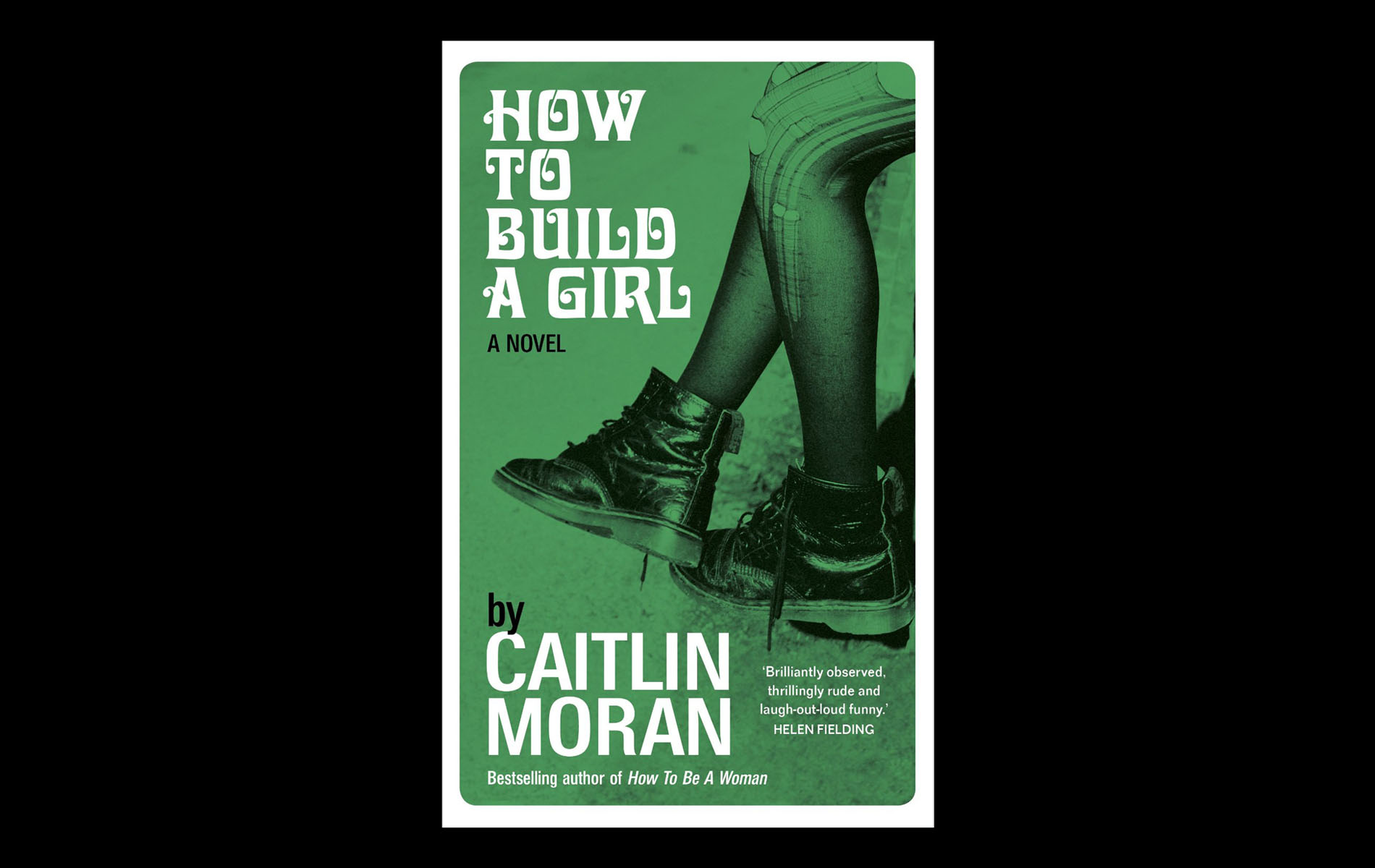Moran’s teen girl protagonist seeks personal transformation through an edgy alter ego.
by Kaylen Ralph
By page 68 of How to Build a Girl, protagonist Johanna Morrigan has died. Not like, gruesomely, or even literally, but spiritually and metaphorically, 14-year-old Johanna Morrigan has been laid to rest. In her place is Dolly Wilde, an alternate persona that Johanna considers superior to her own inept one.
After an enthusiastic but poorly received Scooby-Doo impression on live TV, Johanna decides she can’t bear the disappointment of embarrassing her family and making a joke of herself.
Joanna thus introduces Dolly Wilde as her “’new pet.’ She’s an early 1990s prototype Tamagotchi. I am my own imaginary friend.”
Having been initially invited onto the show to read her poem about her beloved dog (she’s an aspiring writer), Johanna uses the flopped appearance as a catalyst for serious change. “I want to be a self-made woman,” she says. “I want to conjure myself out of every sparkling, fast-moving thing I can see. I want to be the creator of me. I’m gonna begat myself.”
Dolly ditches Johanna and her “chunky hand-knitted jumper(s) with rainbows” for a new black wardrobe, combined with the ethos of Dorothy Parker and the imagined affections of Dylan Thomas and John Lennon. For the next two-thirds of the book, this works out well for Dolly. She gets a job as a music journalist at Disc & Music Echo, and she ditches wanking for shags with real, live man-boys (well, she doesn’t “ditch” so much as supplement).
The backdrop of Johanna’s transformation to Dolly takes the literary device of “scene” to the next level. It’s England in the early 1990s, and Johanna/Dolly lives in a council estate with her alcoholic father, postpartum-depressed mother and gaggle of siblings. Margaret Thatcher is on her way out as the acting Prime Minister of the UK, much to the delight of Johanna’s father. “’I would fucking kill her—Thatcher,’ he would say, watching the miners’ strike on the news.”
Financial struggles and family squabbles aren’t unique to any certain place or time in history, but Moran’s rendering is authentic and raw. In her author’s note, Moran writes, “Like Johanna, I come from a large family, grew up in a council house in Wolverhampton, and started my career as a music journalist as a teenager. But Johanna is not me.”
Aside from the political and economic backdrop, a slightly sunnier time stamp for interpreting the novel comes through Dolly’s work as a young music journalist at Disc & Music Echo (sample some of her favorite tunes in the playlist below). She gets less-than-prestigious assignments covering the groups that suburban kids go gooey-eyed for. As she dives deeper into London’s underground counterculture and her work at D&ME, she gets to cover more high profile groups. The turning point, both in the evolution of Dolly’s career and in her adolescent lifestyle, is when she gets chastised for being “too fangirl” in her review of John Kite, a fictional artist with whom she becomes obsessed.
Even while embodying her Dolly persona, Johanna is her own worst enemy. It’s the same idea – of teenage girls feasting on the flesh and self-worth of the weakest link — that makes many a pop culture phenomenon go round; think Mean Girls’ Regina George or the girl-on-girl sabotage that carries Confessions of Georgia Nicolson, a young adult British series from the last 1990s. But in How to Build a Girl, Dolly is the mean girl to her own “loser.” After her disastrous TV appearance, Johanna anticipates the worst of what her peers and classmates can offer; by the time other kids catch wind, she has already subjected herself to the worst of the vitriol.
Johanna is a unique girl and character, but her experiences as a young woman are universal. Feedback means everything to her, whether it’s from her editors about her work at the magazine, her older brother, Krissi, about her sexual and intellectual maturity, or from herself after the occasional glance in a mirror (of which there are none in her family’s home. “Mum won’t have them: ‘They’ll just break, and bring bad luck.’”)
A notable void in the novel I found myself contemplating while reading the novel in 2014, was that social media was a complete non-issue. As a woman who didn’t experience Facebook until the tail end of high school, and as a journalist operating in a day and age where your work is irrelevant unless it’s shared widely and often, the absence of social media as a factor in Johanna’s life served a means to consider how these timeless dramas have become exacerbated in 2014. During the bleakest days of Johanna’ s self-loathing, she can wallow in the wailing of her favorite artists. When she takes to her computer after a day of verbal abuse from her family and from inside her own head, it’s to write about her passion, not to watch the embarrassment play out further online amongst her peers.
Johanna is a virgin; her life exists in the structured vacuum that characterizes adolescence (family, friends—or lack thereof—, hobbies, meal times, pets, television, etc.). Dolly has sex with multiple partners and feels comfortable talking about her conquests with whomever; her life exists in a realm where there is no such thing as over-sharing or overdoing it, and she spends a lot of time breaking her upbringing down in order to construct her alternate reality and lifestyle. The intersection of her personas is where the “manual” for building a girl is found.
Dolly’s Disc & Music Echo Jams
Kaylen Ralph is The Riveter’s co-founder and co-Editor in Chief. You can find her on Twitter at @kaylenralph.




